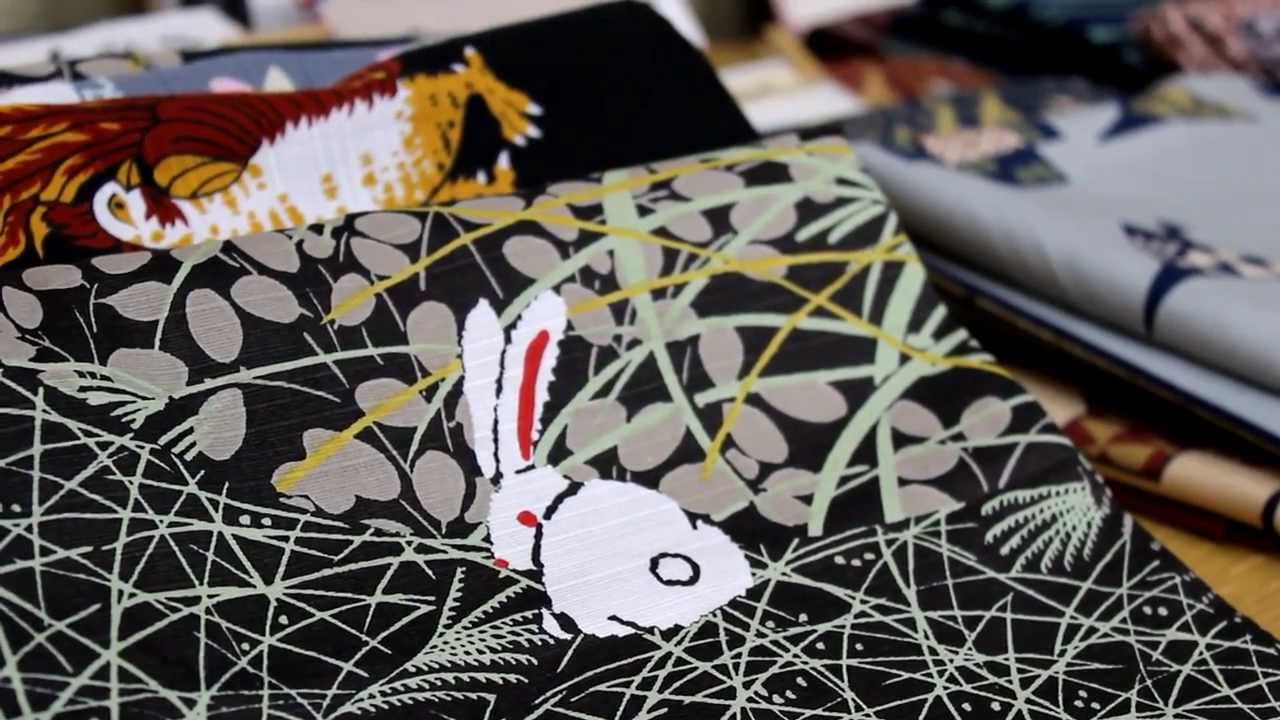It is said that when Yuzen dyeing was developed in the 17th century, dozens of other methods of ornamenting and dyeing fabric were forgotten. The intricate designs and multiple colors make articles dyed with the technique highly treasured, and yuzen silk kimono are heirlooms handed down for generations. The method was developed by the famous fan painter Yuzensai Miyazaki, who was born in 1654. Each piece is unique, drawn freehand onto the fabric, so even if an artist uses the same design, there will be differences in color and line quality.

Traditional Yuzen Fabric Dyeing
The basic technique is to draw a design onto the fabric in a fugitive blue dye. Then a rice paste is applied using a tool similar to one for applying icing on a cake. The rice paste acts as a barrier to the dye, so the lines remain white. Using a brush, the artist then paints colors into the spaces. After the design is complete, it is covered over with more rice paste and the background dye is applied. Finally, the dyes are set and the excess color and paste rinsed out. Often embroidery or gold or silver leaf are applied to the dyed fabric to enhance the image with sparkle and dimension.
Because the technique is so time-consuming, finished articles are usually used for special occasions. Kanazawa City in Ishikawa Prefecture is known for its high-quality yuzen work, as is Kyoto, where the technique was created.

